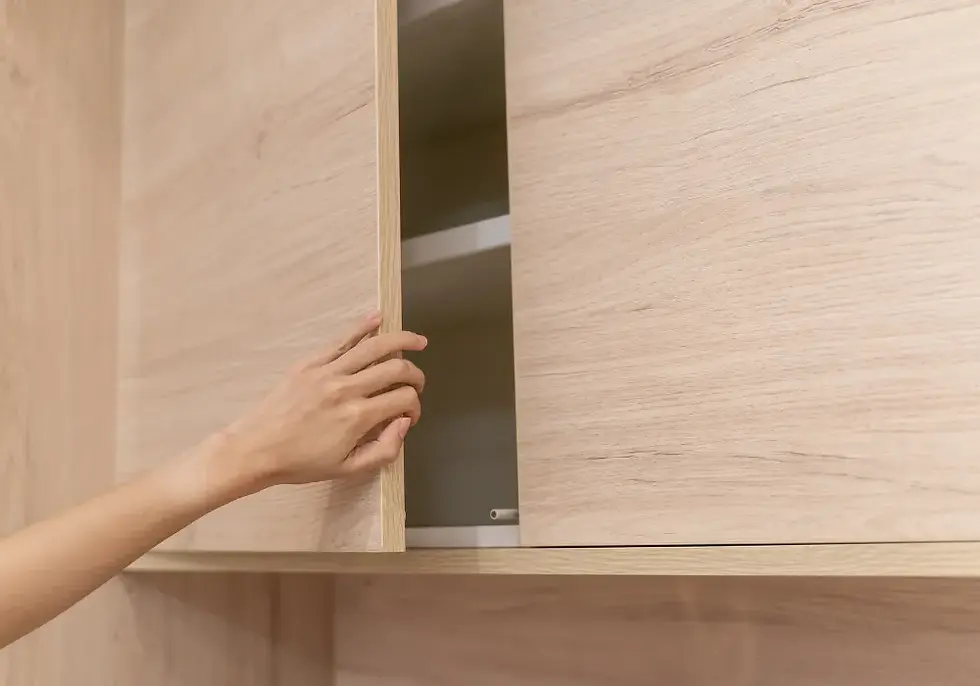Sustainable MDF: Full Guide to Environmental Aspects
- Michelle Natania
- Nov 30, 2023
- 4 min read
Updated: Oct 27
Medium Density Fibreboard (MDF), a material made of wood fibres mixed with resin, is famously known as one of the best alternative materials to real wood for furniture and flooring. It is used and appreciated by many not only for its durable quality and affordable price but also for the inherent environmental characteristics it possesses. This growing recognition highlights why sustainable MDF is increasingly viewed as the ideal choice for eco-conscious architects and manufacturers alike.
This shift toward eco-friendly building and manufacturing materials means consumers are actively seeking products that minimize environmental harm. Unlike traditional timber, the production of sustainable MDF boards efficiently utilizes wood fiber remnants that would otherwise go to waste, reducing demand on raw lumber resources.

Moreover, this efficiency, coupled with advancements in low-emission manufacturing, makes this board a superior option in minimizing the overall carbon footprint of your projects. The sustainable characteristics of MDF that make it an ideal material are as follows:
1. Lower Carbon Footprint from Efficient Energy Consumption
Medium-Density Fiberboard consumes less energy in the manufacturing process compared to the production of other materials, resulting in a smaller carbon footprint. Varied energy sources used throughout the production process help minimize carbon footprints. Most sustainable MDF producers don’t rely solely on non-renewable energy sources, such as fossil fuels, in the manufacturing process. They also utilize energy sources like natural gas to heat the thermal fluid used to press the mixture of wood fibres, resin, and glue.
2. High Recyclability and Biodegradable Composition
MDF's recyclability is evident not only in the initial production process — demonstrated by how the board is created by utilizing and reusing wood fibre remnants left behind from other wood-related manufacturing processes — but also at the end of its useful life. Since furniture made from this type of material is no longer desired or has exceeded its lifespan of 15–25 years, it can easily disintegrate due to being made from wood shavings glued together. This means that most parts of sustainable MDF are composed of biodegradable materials, leaving no toxic traces when properly disposed of.
3. Potential for Biofuel Production via Pyrolysis
Beyond its biodegradability, recent studies have explored optimal recycling methods for MDF. Research has shown that through pyrolysis conversion — a thermal treatment that heats various types of waste (typically plastics) at high temperatures to convert them into energy — used sustainable MDF has the potential to be recycled to produce biofuel. This presents several viable options for the final disposal.

Example of an MDF producer company that has implemented eco-conscious business practices
The Importance of Choosing Certified MDF Suppliers
It is crucial for you to know where your MDF suppliers source their materials and how their business practices align with environmental conservation efforts. Although Medium-Density Fiberboard is inherently eco-friendly, not all producers maintain the same level of environmental commitment. Selecting the right supplier is the final strategic step to ensure your project is truly sustainable, while complying with relevant government regulations. Certification is the ultimate guarantee that a product's sustainability claims are verifiable. Checking for certification ensures your purchasing decision is both ethical and environmentally sound. Here is why certification matters:
Verified Sourcing: Certification guarantees that wood fibers come from responsibly managed forests, actively preventing illegal deforestation.
Environmental Compliance: Ensures the manufacturer's business practices meet stringent, up-to-date environmental regulations.
Quality Assurance: Certification often includes quality and safety standards, such as guaranteeing low formaldehyde emissions.
Market Credibility: Allows your business to use Sustainable MDF that is recognized globally, significantly boosting your brand's ethical image.

Example of a Sustainable MDF Producer Company
Sumatera Prima Fibreboard is one of the few MDF producer companies that, for a long time, has been making it clear that their business activities go hand in hand with efforts to maintain a clean and sustainable operating environment. They have gone the extra mile, not only to meet the domestic environmental standards set by Indonesia's government but also to exceed them and even achieve international standards. This has been demonstrated through their recent receipt of the Singapore Environmental Achievement Awards 2023 from the Singapore Environment Council (SEC) as a Regional Merit Winner in the Multi-National Company Category a few months ago. This further underscores their commitment to becoming a leading example for other companies to adopt responsible industrial methods and heightened environmental mindfulness.
In conclusion, not only is sustainable MDF one of the strongest materials to choose for your furniture and flooring needs, but you also need to consider it over any other material since it is made from biodegradable wood fibre. It is the perfect choice for those who want to decorate their space with sturdy and accessible material.
To increase your participation in supporting environmental sustainability, you must selectively choose where you buy. Checking the MDF producer company's background, past activities, and certification before purchasing from them is also necessary to verify that the material you buy is produced according to recognized environmental standards.
If you're looking for high-quality Medium-Density Fibreboard manufactured through a certified process that adheres to international environmental standards, visit our catalogues to know our sustainable MDF price at PT. Sumatera Prima Fibreboard (SPF).



Comments